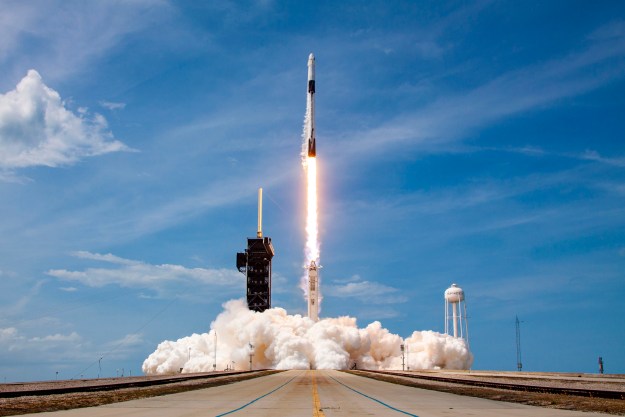The U.S. Space Force (USSF) quietly conducted its first test launch of an unarmed nuclear-capable ballistic missile overnight across the Pacific Ocean.
The intercontinental ballistic missile launched from the Vandenberg Air Force Base in California at 12:33 a.m. PT on Wednesday, February 5. The missile traveled about 4,200 miles before landing around the Kwajalein Atoll in the Marshall Islands, according to Gizmodo. This is the first launch since the USSF became the sixth branch of the military in December.
“This launch marks a very special moment in our nation’s history,” Col. Anthony Mastalir, the 30th Space Wing commander, said in a press release about the launch. “Providing the range support needed to facilitate this launch showcases how the Space Force will continue to support and integrate into the joint fight to ensure national security for our country.”
The USSF used the Minuteman III missile, which reportedly has a maximum range of more than 8,000 miles.
The press release said that the testing was “not related to any real-world events,” and that the launch instead was meant to “holistically test the systems, procedures, and Airmen.”
Proud of our @30thSpaceWing team that supported @AFGlobalStrike's #ICBM Developmental Test Launch today. "We have to demonstrate that we are ready and deter from a position of strength." – Gen. John Hyten, Vice Chairman of the @thejointstaff. #Deterrence @US_Stratcom pic.twitter.com/sRj95ZoHFM
— United States Space Force (@SpaceForceDoD) February 5, 2020
The main goal of the USSF is to train and equip the military to protect the U.S. and its allied interests in space.
“USSF responsibilities include developing military space professionals, acquiring military space systems, maturing the military doctrine for space power, and organizing space forces to present to our Combatant Commands,” the USSF’s website says.
When President Donald Trump announced his idea for a Space Force in March 2018, the idea was met with a combination of excitement, dread, and mockery. Trump officially made the USSF a branch of the military on December 20, 2019, by signing into law the $738 billion defense bill.
Since it officially became a branch of the military a few months ago, the USSF has decommissioned a 26-year-old GPS satellite to make way for newer ones as well as enlisted Gen. John Raymond as the first Chief of Space Operations.
Digital Trends reached out to the USSF to see how many test launches they plan to conduct this year. We will update this story when we hear back.
Editors' Recommendations
- Crew-8 launches with small crack in capsule, but SpaceX says it’s safe
- How to watch the first U.S. commercial moon mission launch tonight
- U.S. issues its first-ever fine for space debris
- SpaceX Starship rocket launches in first test flight, but explodes in midair
- Rocket Lab aces its first launch from U.S. soil




